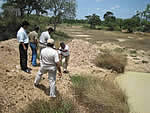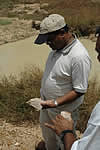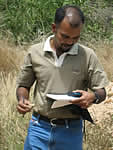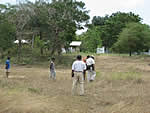
| Overview | News |
Project overview: Ralapanwa Water Project
 |
Ralapanawa is situated in a poor, rural area in Sri Lanka’s dry zone, approximately 80 miles North North East of Colombo. Receiving only one monsoon in the spring, water becomes scarce towards the end of the summer and severe shortages are common towards the end of the year. The families in this community live in poverty, surviving on small scale paddy and chena cultivation and the lack of water exacerbates an already difficult life. |
In light of the local water shortages and the difficulties the school experiences during the dry season, the school planned to build a well on its land to provide water to the school and villagers. Funds were raised by the villagers and work commenced on the well. However, the contractors disappeared with the money after making the preliminary excavations, leaving a shallow hole. Aid Sri Lanka were asked to complete the work. |
 |
 |
The proposed well will provide water to the school and to an estimated 250 local families within a ½ km radius. Currently, the villagers travel up to 3 km to get water. With no motorised transport the journeys are made on foot or bicycle. In addition to being time-consuming and physically strenuous, particularly in the high temperatures, the area is home to wild elephants which are extremely dangerous. The current lack of water causes problems for the school not only in terms of providing drinking water for the children but for toilets, washing and keeping the plants in the playground alive. |
It is not only the scarcity of rain water which is problematic in this area, but ground water is often of poor quality due to geological factors and irrigation practices. Water is often hard and saline. Inhabitants of the area are unconcerned that the well may yield salty water as this is what they currently consume. However, the health implications are clear and a recent study revealed a high incidence of chronic renal failure in dry zone inhabitants which has been attributed to the poor quality water. |
 |
 |
The design of this project will draw on the expertise of hydrologists, using the latest technology to identify the optimum location for drilling and the best well type, thus ensuring that the well yields the highest quality water possible. The construction of the well will be undertaken by local villagers who are keen to participate in the project and will be overseen by technical experts. We aim to complete the construction of the well during the school holidays so as not to disturb the classes. |
In order for the project to be sustainable in the long run it is essential that any maintenance can be done locally at low cost. To this end, cost of spare parts and level of maintenance required will be key considerations in the design of the project. In addition, once the well is completed, local residents will be provided with any necessary training in maintenance. |
 |